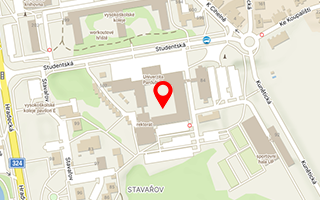- Introduction
- Introduction
- Introduction
- Introduction
- Introduction
- Introduction
While epidemiological studies show a significant contribution of work load to lower back diseases in certain types of occupational diseases at a group level, the developed method should allow assessment at a level of individual persons. This represents qualitative progress as compared with previous assessment methods.
- Introduction
- Introduction
We are making a map which located the exterior stone, and ceramic, mosaics within the Czech Republic.
The map is also the "front-end" for a populated database of each location. The database includes:
documentation of each mosaic, information and descriptions of individual mosaics, highlighted mosaics suitable for conservation treatments, procedures for conservation of various types of mural mosaics.
Supplmenting this database, we are exploring: mosaic conservation procedures and approaches, testing suitable materials and procedures for conservation of mosaics, applying conservation treatments with selected materials and procedures.
- Introduction
The Czech Republic is rich with stucco work from the renaissance era. Through interdisciplinary research between historians, restorers and heritage care workers, renaissance and mannerism stucco works from the Czech and Moravian territories, through to 1620, will be cataloged. This will be the starting point for synthetic processing of these works, and for their respectful placement within the broader Central European historical context.
- Introduction
a) Research of preparation of special cellulosic matrix (films, dimensional 3D-structures and dimensional textiles, composites and its combination with other biopolymers (natural polysaccharides and peptides), or other physiologically active substances.
b) Design of prototypes of matrixes applicable as matrixes for active dressings in wound healing, surgery, or matrixes for tissue engineering. The research will be focused on fading of optimal technology of preparation of matrixes, surface treatment of materials, and incorporation of additives, e.g. biologically active substances or nanoparticles. The matrixes can be applied further in combination with drugs with a purpose of prolongation and effectiveness of required therapy (systems of drug delivery).
c) Creation of conditions for further interdisciplinary cooperation in clinical research in wound healing, clinical microbiology, burn treatment and reconstructive surgery in Czech Republic and abroad.
d) Expansion of production program of a company Holzbecher spol. s r.o. barevna a bělidlo (division Medical) by prospective area of active wound healing and exploiting of built research capacities.

